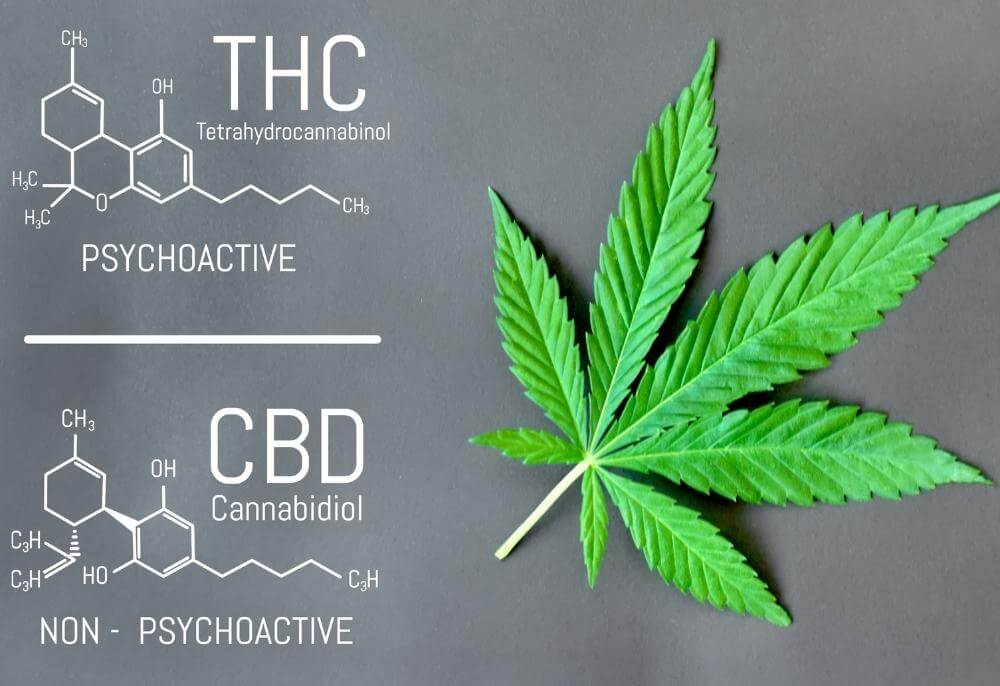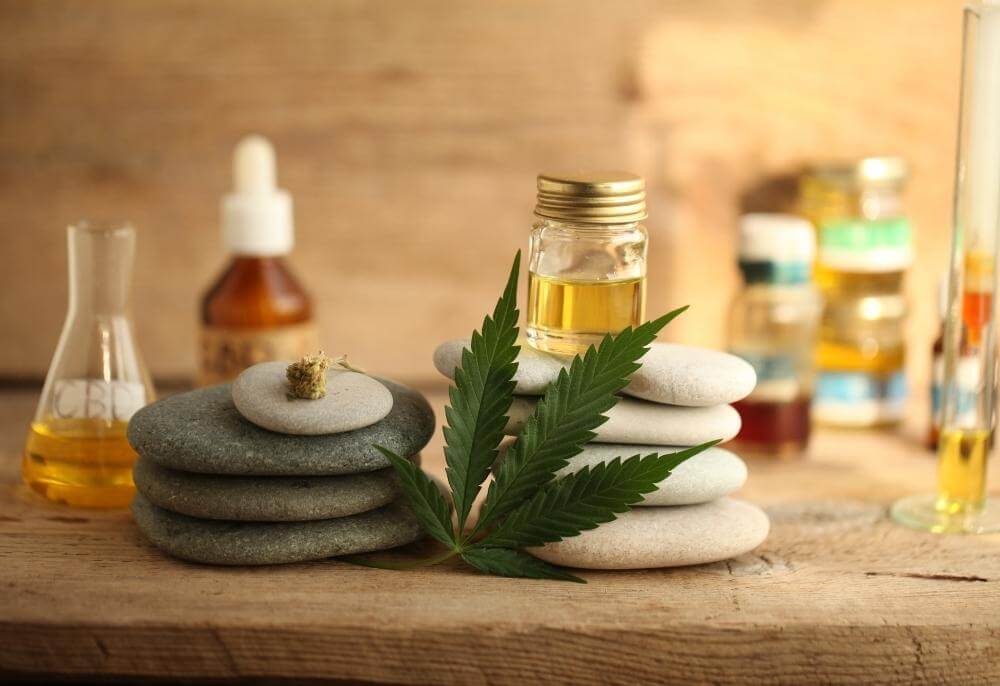Like many of the marijuana products out there, liquid THC goes by a variety of names. The most technically sound name for it is marijuana tincture or cannabis tincture, but “liquid marijuana” works just as well.
There are several slang terms for it, too, like green dragon, tink, and mayzack.
But what’s interesting about liquid pot is that it was likely one of the first innovations in plant medicine. The earliest documentation about a marijuana tincture dates back to 1025 in The Canon of Medicine. Consuming liquid THC might just be as ancient a practice as smoking pot out of pipes!
In today’s age of nanotechnology pot beverages, transdermal topicals, and the marijuana vape pen, all available at marijuana dispensaries across the US, classic products such as liquid cannabis tend to get overlooked.
Curiously, there is a steady market of customers who prefer liquid THC to smoking.
Let’s explore what liquid marijuana is, its benefits, and how its made and used.

What Is Liquid THC?
Liquid cannabis is an extract of cannabis plant material. It involves soaking the plant matter in a solvent to make a tincture of cannabinoids. While the cannabis flower is most commonly used to make a tincture, leaves and other plant material may also be used.
More often than not, a tincture of cannabis has high delta-tetrahydrocannabinol (THC) content, making tinctures quite potent since THC is the plant’s main psychoactive component.
The typical commercially available marijuana tincture can have a THC concentration higher than 90%. Besides tinctures, liquid marijuana is sold as vape juice for a vape pen.
The dry flower of cannabis typically has a THC concentration of 15%-25%. These numbers should help you understand why liquid THC is considered a potent form of cannabis.
If you are sensitive to THC or prone to anxiety, you must pick a mellow product with a lower THC concentration. But even if you aren’t sensitive, it’s best to consume liquid marijuana cautiously, especially if it’s your first time.
Alcohol is the most commonly used solvent, but some manufacturers use oils, such as olive and coconut oil. Glycerin is another common solvent.
Liquid marijuana is typically sold in a dropper bottle. Dropper bottles are small, opaque bottles with a cap that doubles as a dropper. Some manufacturers sell their cannabis extract in spray bottles.
Although most users don’t mind purchasing liquid cannabis, some enthusiasts prefer making their own cannabis tinctures.

How to Consume Liquid THC
One of the primary benefits of liquid marijuana is that it can be consumed in various ways. The three most common ways of consuming the liquid form of THC are:
#1 The Sublingual Method
The sublingual method refers to oral consumption. All you have to do is put a drop/spray the liquid under your tongue. It’s the most common way of consuming liquid THC and CBD oils.
If you’ve consumed CBD oil before, you might know that the soft skin under the tongue has a thin membrane through which the body can absorb cannabinoids.
Sublingual consumption is more effective than swallowing a marijuana tincture since this way, the THC goes straight into the bloodstream and does not pass through the acidic stomach.
You can’t hold the marijuana tincture under your tongue until it’s all absorbed. Let the cannabinoids absorb for two minutes before swallowing the tincture to experience the effects quickly.
#2 Edibles
Liquid marijuana is easy to mix into anything edible, making liquid THC an excellent way to make tasty medicated treats.
When someone decides to make edibles with cannabis, they have to decarboxylate the dry flower to activate the THC. Once activated, the flower must be infused with fat so the human body can absorb it effectively. The marijuana can then be used to make gummies, brownies, or other dishes.
The nice thing about liquid cannabis is that the cannabis is already decarboxylated in manufacturing. So, the liquid can be directly mixed into any dish, saving time, effort, and cleanup.
The most common ways of ingesting liquid THC include mixing it into a dressing, drink, sauce, or other food. Mixing it into food is an excellent way to mask the taste of the liquid.
When you eat cannabis, it takes longer to show its effects than smoking it. Edibles take two hours and sometimes more to take effect. Wait patiently before deciding to increase your dose.
#3 Vaping
The liquid form of marijuana is also used in conjunction with vape products. It’s more convenient than smoking dry flower because of the pen’s instant use and insignificant odor. Furthermore, since vape pens heat the liquid THC at a lower temperature than smoking, vaping leads to less lung irritation and lower cannabinoid loss.
The health risks of long-term vape pen use have not been studied adequately. Do your due diligence and make an informed decision before vaping cannabis.

Benefits of Liquid Marijuana
Consuming a cannabis tincture has several advantages over consuming other forms of cannabis:
- Easy to use: You can carry cannabis tinctures anywhere and consume them as necessary. No need to roll a joint or prepare your vape pen. Since tinctures come in small bottles, you can place a couple of drops under your tongue to take your dose.
- Flexible: You can use cannabis tinctures to make other cannabis products. With liquid cannabis, the option of incorporating marijuana into foods and drinks opens up. Some also enjoy the effects of cannabis bath bombs.
- Discrete: Many users don’t feel comfortable smoking or vaping cannabis, especially in public, due to its distinct and strong odor. Liquid marijuana is odorless, and tinctures can be easily consumed by dropping the required amount under the tongue. Besides, liquid THC can also be mixed into foods, including coffee, for immediate and discreet consumption.
- Quick onset: Cannabis tinctures are absorbed quickly when dropped under the tongue. The numerous capillaries in the mouth absorb the cannabinoids and allow the liquid to take effect in minutes. Compared to cannabis edibles and capsules, tinctures work a lot faster.
- Fine-tunable dosage: Manufacturers supply information about how much THC is in a drop of their tincture. In other words, consumers have more control over their doses and can try different amounts until they learn how much works best for them. Cannabis edibles and capsules have high THC doses that cannot be altered for every use.
How to Make a Cannabis Tincture: The Traditional Method
The room temperature method is the conventional method of making a cannabis tincture. It doesn’t involve stoves and refrigerators or any fancy technology. Even without these modern tools, the method pulls all the THC from plant matter.
While the method is convenient and safe, the main drawback of it is that it takes a long time. If you aren’t willing to wait 30-60 days for your tincture, move on to the next section, where we discuss the modern methods of extracting THC and making a tincture.
Here’s a breakdown of the room-temperature method:
- Use a marijuana grinder and scissors to break down the plant matter.
- Decarboxylate the matter in the oven at 230℉ for 35 minutes.
- Put the decarboxylated cannabis in a quart mason jar.
- Pour 32 ounces of alcohol into the jar. You will need to use the highest-proof alcohol you can find. Everclear is an excellent option, but Bacardi will also work. Avoid using Isopropyl alcohol.
- Close the jar tightly, ideally with a screw-on lid.
- Shake the liquid and cannabis well.
- Put the jar in a paper bag or any dark bag, and store it in a closet or cabinet. Putting the jar in a dark place will ensure the sunlight doesn’t spoil the tincture.
- Keep an eye on the jar, ensuring room temperature is maintained, and let the mixture sit for 30-60 days. The longer you let it sit, the better the outcome.
- When the steeping period ends, strain the solid material from the liquid with a cheesecloth.
How to Make Cannabis Tincture: The Modern Methods
To make liquid THC with modern methods, besides cannabis and high-proof neutral alcohol, you will need:
- Baking sheet
- Parchment paper
- Grinder or scissors
- Mason jar
- Cheesecloth or strainer bag
- Kitchen thermometer and saucepan (if using the hot method)
The first step is common in the hot and cold method.
Chop your marijuana down to pieces roughly the size of rice grains. You can use a grinder, but scissors will also work.
Preheat your oven to 240°F/115°C, and line a baking sheet with parchment paper. Spread your marijuana onto the paper. Ensure the ground plant matter is spread in one even layer.
Put the baking sheet into the oven for 30-40 minutes. Stir the plant matter every ten minutes to ensure the decarboxylation occurs evenly. Properly decarboxylated cannabis looks toasted but not burnt.
Get the sheet out of the oven and let the marijuana cool.
Cold Method
Put the ground-up and decarboxylated cannabis into a zip-loc bag and put the bag in the freezer for a few hours. Also, put the alcohol you have in the freezer. Alcohol doesn’t freeze solid in residential freezers, so there’s nothing to worry about.
In a few hours, the cannabis will become frozen stiff. Now, mix an ounce of cannabis with a quart of alcohol in a mason jar, and seal it shut.
Shake the jar for five minutes, and put it back into the freezer. Remove the jar from the freezer every two-three hours, and return it to the freezer.
Shaking and storing should continue for two days, and at the end of the 48 hours, pour the liquid through a cheesecloth to separate the plant matter. The tincture is ready.
Hot Method
Put the cannabis and high-proof alcohol into a mason jar. Give it a good shake for a few minutes.
Fill a saucepan with about an inch of water and put it on a stove. Bring the water to a simmer, and put the mason jar into the water.
With the thermometer, ensure that the jar’s temperature does not exceed 170°F/76°C. Turn the heat down when the mixture gets too hot, and keep the jar in the water bath for 30 minutes.
Let the jar cool and strain the plant matter from the solution, and your tincture is ready.
How to Store Liquid Marijuana
When your liquid THC is ready, the best way to store it is in a dropper bottle made from glass. Ideally, you must use opaque bottles with a brown or dark green color since the deep color will protect the tincture from harmful UV rays and maximize shelf life.
It’s best to steer clear of glass bottles altogether. When your tincture is bottled, put all the bottles in your fridge to further improve shelf life.
Conclusion
As more states legalize the cannabis plant for recreational use, more varieties of cannabis products are bound to become available. While vape pens are the new hot cannabis product, liquid THC offers a range of health benefits over smoking pot.
With this guide handy, you understand all the ins and outs of liquid THC and how to make it. Getting medicated the healthy way is hours away!
